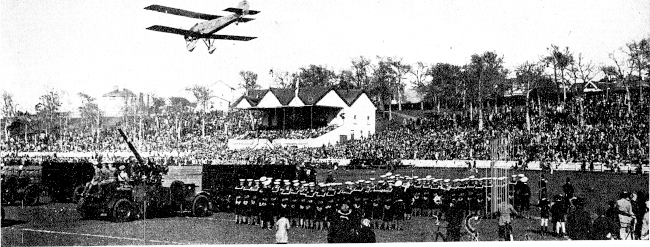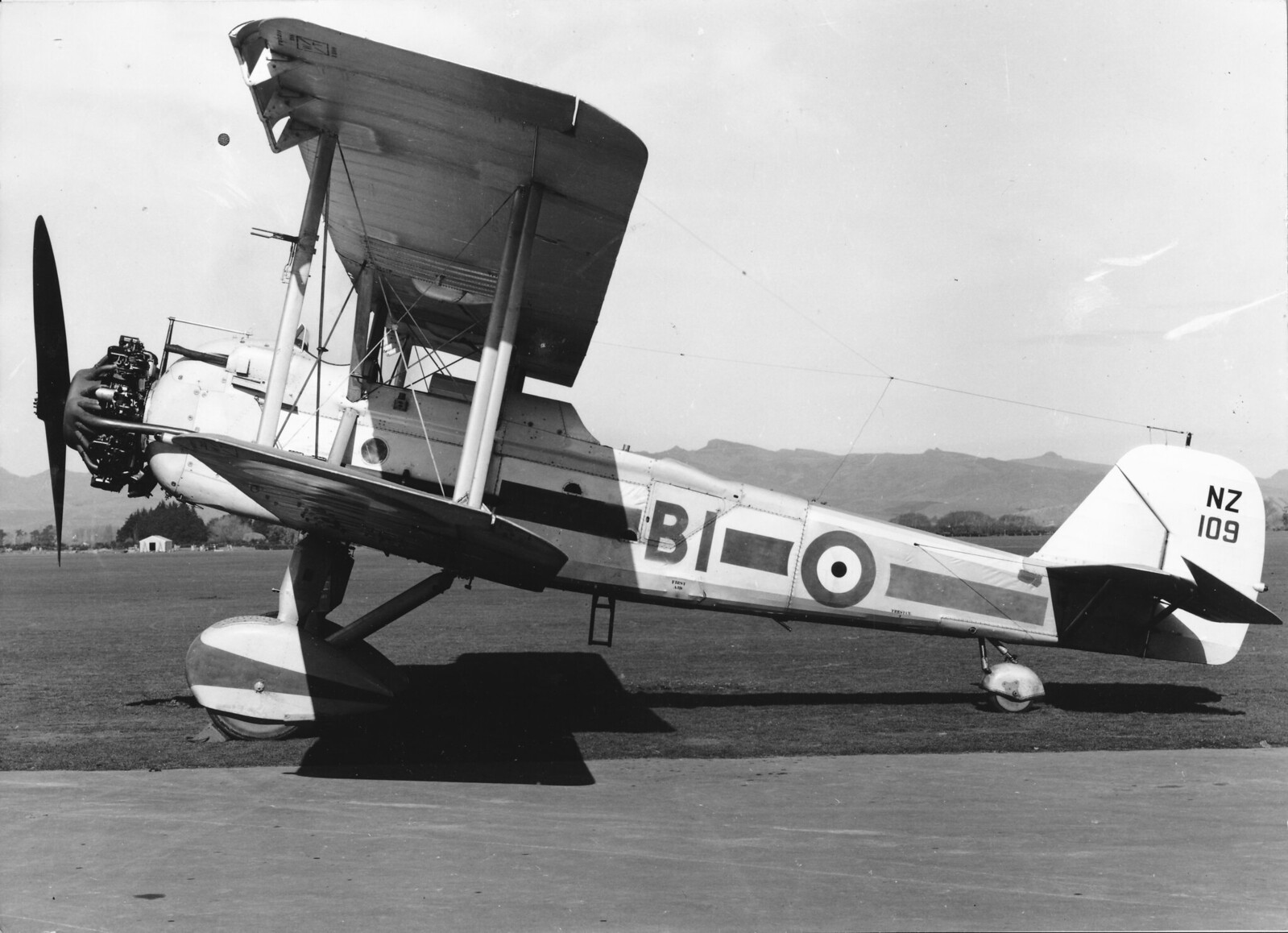|
|
Post by Dave Homewood on Sept 4, 2016 14:48:29 GMT 12
Wow I love this photo, I'd really like to see a high resolution version, as that Beestie is very low! DIPPING IN SALUTE: AIR FORCE UNITS TAKE PART IN THE CEREMONIAL PARADE AT THE AUCKLAND DOMAIN YESTERDAY A Royal New Zealand Air Force Vickers Vildebeest bombing machine dipping in salute in front of the grandstand during the parade held in honour of the King's birthday. NEW ZEALAND HERALD, 24 JUNE 1936  |
|
|
|
Post by johnnyfalcon on Sept 4, 2016 18:59:09 GMT 12
...a "Vildebeest bombing machine"...!! Gotta love it. Journalists haven't come far - it was probably landing or plunging really slow
|
|
|
|
Post by Dave Homewood on Sept 4, 2016 19:02:34 GMT 12
That is what they were called though.
|
|
|
|
Post by johnnyfalcon on Sept 4, 2016 19:10:09 GMT 12
Well who'd have thought? I make a retraction... At least it wasn't called a Cessna!
|
|
|
|
Post by Dave Homewood on Sept 4, 2016 20:43:31 GMT 12
Yep, it was very common in the 1930's to refer to an aeroplane as a "machine", even in RNZAF circles. And this particular type happens to be a bomber, so it's a bombing machine. Sounds odd to modern ears but not back then.
The one I have trouble with is in the earlier part of the 20th Century the media/press referred to aeroplanes as "airships", but airships as we know them were known instead as derigables, or often as Zeppelins even when not produced by that company.
|
|
|
|
Post by errolmartyn on Sept 4, 2016 22:51:14 GMT 12
Yep, it was very common in the 1930's to refer to an aeroplane as a "machine", even in RNZAF circles. And this particular type happens to be a bomber, so it's a bombing machine. Sounds odd to modern ears but not back then. The one I have trouble with is in the earlier part of the 20th Century the media/press referred to aeroplanes as "airships", but airships as we know them were known instead as derigables, or often as Zeppelins even when not produced by that company. Machine is simply a contraction of what they were originally and accurately described as in the late 19th and early 20th centuries - ie, flying machines, as, for example, in Octave Chanute's 1894 seminal work of the time, Progress in Flying Machines. Errol |
|
sueg
Leading Aircraftman

Posts: 1 
|
Post by sueg on Jan 22, 2017 20:34:26 GMT 12
I am wanting to find out about the construction of the explosives store-houses, travasses and patakas at the bomb dump, Hobsonville. Any dates, details, information would be most appreciated.
|
|
|
|
Post by camtech on Sept 8, 2017 13:26:04 GMT 12
Just to remind ourselves of the beast itself (RNZAF):  Vildebeest NZ109 B1 Wigram Vildebeest NZ109 B1 Wigram by Les Billcliff, on Flickr I have just scanned some more Vildebeest photos and will put them up when I upload them. Perhaps this could be the "Vildebeest Pile"? |
|
|
|
Post by pjw4118 on Sept 8, 2017 14:10:13 GMT 12
Dont tell Dave !
|
|
|
|
Post by The Red Baron on Sept 8, 2017 14:51:51 GMT 12
Dont know if this films been up before...
|
|
|
|
Post by camtech on Sept 8, 2017 15:03:04 GMT 12
Love it! Speeches going on and the pilot is still in the cockpit.
|
|
|
|
Post by Dave Homewood on Sept 8, 2017 15:17:56 GMT 12
That is one of my favourite pre-WWII film clips.
|
|
|
|
Post by camtech on Sept 9, 2017 14:04:52 GMT 12
|
|
|
|
Post by planecrazy on Sept 9, 2017 14:11:20 GMT 12
What a beautifully ugly machine, always wondered about the story of a ground crew person walking
between the prop blades while one of these was idling, is this try or just a Vildebeest myth?
|
|
|
|
Post by Dave Homewood on Sept 9, 2017 14:20:31 GMT 12
It is true. The story in "A Long Patrol" by James Sanders however is wrong in its details (like so much in that book, unfortunately). But yes, it did happen, that Colin "Shorty" Brown of No. 8 (GR) Squadron did accidentally step through the slowly idling propeller and was unscathed.
|
|
|
|
Post by oj on Sept 9, 2017 21:52:03 GMT 12
Sorry Dave, need some science to verify.
What is the idle RPM X 2 for blade pass interval?
Other wise it is just a persistent romantic story.
|
|
|
|
Post by Dave Homewood on Sept 10, 2017 0:13:28 GMT 12
I suspect the incident may have happened when the prop was being started. The Vildebeest was started by an erk cranking a handle to wind up the inertia flywheel starter and then when that is set in motion there must be a period when the prop is turning slowly as it builds up momentum. Brown may not have realised the engine was about to be started and been walking underneath. I did my best to find out more details and did speak with a squadron member who remembered it happening because he was there but he did not remember the details of how it came about.
|
|
|
|
Post by Dave Homewood on Sept 10, 2017 0:16:49 GMT 12
Watch the start of the engine here. There's a very short period where the prop moves slowly then bursts into life. I think the film is cranking a little faster than natural speed too.
|
|
|
|
Post by camtech on Sept 10, 2017 10:09:14 GMT 12
The story of an erk walking through the prop was well known, as my father had mentioned it several times and he only served in the South Island. I have heard other veterans talk about it.
|
|
|
|
Post by Dave Homewood on Sept 10, 2017 13:13:20 GMT 12
I'm no engine expert but would the prop at low idle turn more slowly than on start up? Just wondering.
|
|

